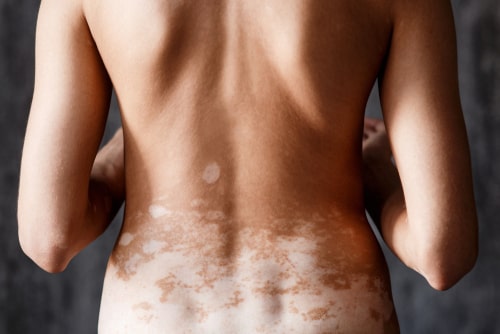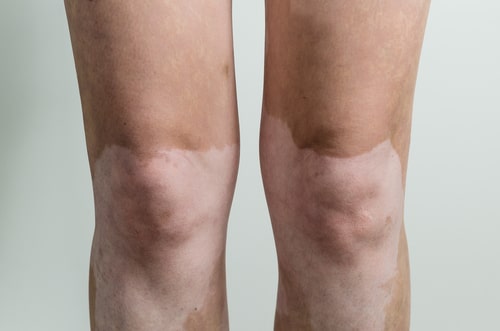
Vitiligo: What is it and how is it treated?

Treatment Duration
30
Suggested Sessions
2-4 times/year
What is Vitiligo?
Vitiligo is a common skin condition that causes the skin to lose its natural pigment, melanin, resulting in uneven, milky white 'patches' on the skin.
The patient feels his skin is normal, however the stress caused by the aesthetic image of the disease creates psychological effects
Vitiligo is characterized as a chronic disease, it is not contagious and above all it is not life-threatening.

 «The onset of Vitiligo can cause serious disturbances in your psychology, so it would be good to contact a psychologist and share your thoughts with your friends and family.»
«The onset of Vitiligo can cause serious disturbances in your psychology, so it would be good to contact a psychologist and share your thoughts with your friends and family.»
Who does Vitiligo concern?
 «About 100 million people suffer from vitiligo worldwide.»
«About 100 million people suffer from vitiligo worldwide.»
Vitiligo Causes
- The genetic predisposition.
- Intense stress, emotional or physical, such as after an injury.
- The weakened cellular environment.
- Exposure to toxins.
- Digestive disorders.

Spotted
- Focal
- Departmental
it is the result of an injurywhich developed into vitiligo.
Generalized:
- Acropersonal
- Mucosal
- Catholic
Almost the entire surface of the skin shows discoloration.
 «Vitiligo symptoms usually appear before the age of 20, but there are cases that appear at an older age.»
«Vitiligo symptoms usually appear before the age of 20, but there are cases that appear at an older age.»
Vitiligo Symptoms
- On hands
- On legs
- On face
- Inside the mouth
- Inside the nose
- In the genitals
- Appearance of gray or white hair growth on the hair, eyelashes and beard in people under 35 years of age.
- Change in the color of the retina.
- Discoloration inside the nose and mouth.
 «Although rare, vitiligo can affect vision and at the same time the color of the eyes, as well as cause hearing loss, since there are also melanocytes in the ear.»
«Although rare, vitiligo can affect vision and at the same time the color of the eyes, as well as cause hearing loss, since there are also melanocytes in the ear.»
Vitiligo: Photos



Autoimmune Predisposition & Vitiligo
Vitiligo Diagnosis
Vitiligo Treatment
- The restoration of color to the skin.
- Limiting the spread of white marks on the body or face.
Topical medicinal preparations
Discoloration treatment
Phototherapy
Surgery
- Treatment for vitiligo works slowly.
- Vitiligo can become persistent.
- The treatment concerns the discoloration of the skin and not the disease itself. Its effects may weaken and maintenance treatments may be needed.

Preventing deterioration in vitiligo
- By protecting your skin from the sun, you avoid sunburn, which can worsen vitiligo. Look for shady places, apply sunscreen daily, and wear appropriate clothing.
- Never use a solarium.
- If you wish to add color to your skin, prefer makeup.
- Avoid cuts, scrapes and patches. They may create new spots.
- Boost your immunity with healthy habits.
- Take care of your mental health and self-confidence.
Vitiligo: Myths & Truths

Frequent Questions
How is vitiligo treated?
Vitiligo is not curable. Depending on the type and examination of the symptoms you are experiencing, the dermatologist will recommend the corresponding treatment.
Is every white mark on my skin a vitiligo?
No. Not every white mark on the skin is vitiligo. The dermatologist is competent to confirm whether you suffer from vitiligo or some other skin disease.
Is vitiligo painful?
No, vitiligo is not painful, but the areas where there is discoloration on the skin are more sensitive and a painful sunburn can occur.
Can vitiligo be transmitted?
No vitiligo can not be transmitted.
Are people with vitiligo more likely to get sunburned?
Yes, the truth is that at the points of damage, the lack of melanin does not prevent the sun's rays from penetrating into a deeper layer of the skin, thus making people with vitiligo more vulnerable to the dangers of solar radiation.
